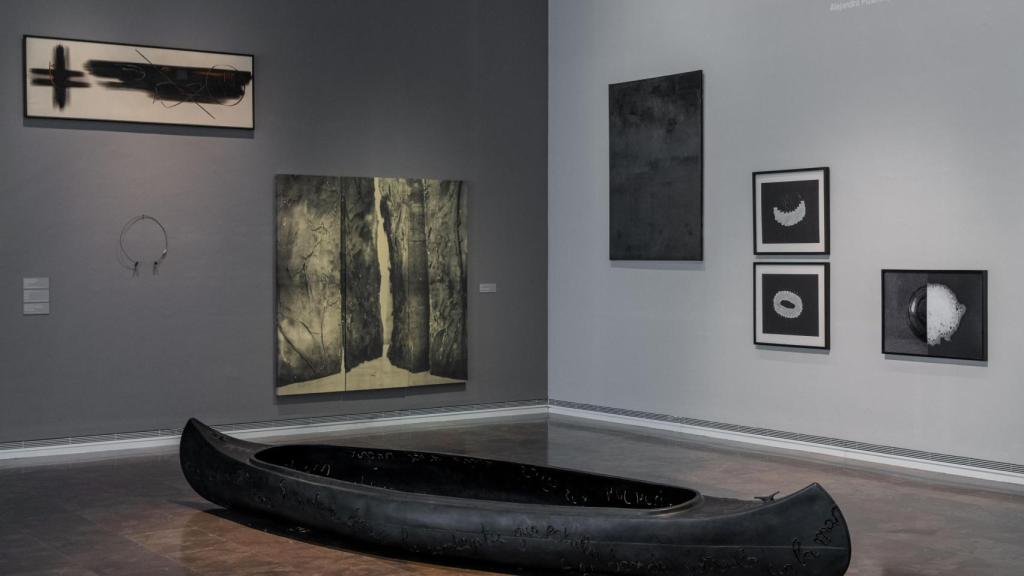Coming from the MACA, the first individual exhibition of the artist Kara Walker (Stockton, California, 1969) in Spain arrives at the IVAM. An organized exhibition from funds donated by collectors Michael Jenkins and Javier Romero to the Alicante museum, one of the most important collections of the artist’s work in Europe.
These are 44 pieces from his New York collection, with which a brief review of the North American work can be made. We do not find ourselves, therefore, with a great retrospective by Kara Walker, like the one proposed by the Walker Art Center in Minneapolis (2007).
This exhibition stopped and stopped at the Whitney Museum of American Art in New York and the Musée d’Art Moderne de la Ville in Paris and, later, the exhibitions at the Schirn Kunsthalle in Frankfurt (2022) or the one recently dedicated to it by the MOMA in San Francisco, to review some of its most relevant exhibitions. However, the limitation raised by the exhibition Burning Village at the IVAM, allows you to get a good idea of the magnitude of his work.
Kara Walker has developed a very particular work since he began his artistic activity at the end of the nineties, making use of cut-out silhouettes. The daughter of a painter and trained at the Atlanta College of Art, her work soon earned her recognition from the Metropolitan Museum of Art (New York) in 2006.
It was before in 1994, however, when, at the age of 24, with his mural Gone: An Historical Romance of a Civil War as It Occurred b’tween the Dusky Thighs of One Young Negress and Her Heart –exhibited at The Drawing Center in New York and owned by MoMA–, obtained its first public acclaim.
Kara Walker. ‘Untitled’, 1999-2000. Photo: MACA. Michael Jenkins and Javier Romero Collection
Las racial tensions that the artist experienced in Georgia, at an early age, were the breeding ground for this piece and the substrate for the development of all her subsequent work. The mural, inspired by the novel Gone with the wind by Margaret Mitchell, revealed for the first time the issues that would occupy the artist, such as sexual violence, slavery, supremacism, women, historical memory and systems of power.
These issues focused Walker’s attention and public recognition, in line with the impact of the postcolonial studies that have progressively found accommodation in public institutions, turning them upside down, forced to review their programming and collections.
Kara Walker: ‘Resurrection Story without Patrons’, 2017. Photo: MACA. Michael Jenkins and Javier Romero Collection
However, the artist’s success has also been the subject of controversy, as it was not well accepted by the political correctness of certain artistic sectors among African-American creators. Questioned over use of stereotypical racial images and its simple artistic execution, Walker has defended his work by appealing to the simple staging of uncomfortable issues to foster, thus, a reflective reception on the use and abuse of power in our time.
Against the historical background of American slavery, the cut-out black silhouettes, in which archetypal figures are recorded, rescued from the memory of literature and cinema, take us to think of the present as suspended timepending to accommodate the black shadows of the past.

General view of the exhibition Inhabit the shadows. Photo: Juan García
These questions, which They demystify the official narratives of power, Kara Walker supports them with microstories; small narratives that empathize very directly with the viewer, in form and substance.
This is how we can recognize it, entering the exhibition, in the work Burning African Village Play Set with Big House and Lynching (2006), based on cut out metal figures. Inspired by the technique of black cut paper silhouettes, characteristic of Victorian portraits of the 19th century, but also in games Chinese shadows and cinema itselfKara Walker manages to take us out of the decorative role of old procedures and images to review the visual language of the now.
His drawings and sculptures, apparently innocent, become a sinister space of speculation.
The reduced space of the exhibition – like a cabinet – puts Kara Walker’s work very much in front of your eyes, so that the simple, apparently innocent techniques used by the artist in drawings, lithographs, aquatints, silkscreens and small sculptures, become a sinister space of speculation.
We recognize this in one of the surprises of the exhibition: the drawings on envelopes and hotel paper (1999-2000). Are delicate, brutal scenes In what they illustrate, they make your hair stand on end. In them, Kara Walker exhibits, without fanfare, her resources and abilities in the use of drawing, beyond her famous silhouettes that extend in the work on paper throughout the exhibition.
Kara Walker: ‘Restraint’, 2009. Photo: MACA. Michael Jenkins and Javier Romero Collection
No less impressive is the photolithography of the series The Gross Clinician Presents: Pregnant Father (2018), as well as the series of etchings and aquatints dated 1997. Likewise, highlight the work Exodus of Confederates from Atlanta (2005) that occupies a preeminent place among all the deployment of work on paper that supports the exhibition.
A separate place, as an example of his interesting film work, is the projection Prince McVeigh and the Turner Blasphemies (2021) in which, among the poetics of the first cinema experiments and the Chinese shadows, the dark aspect of the human being emerges.
General view of ‘Inhabit the shadows’. Photo: Juan García
With basically graphic work dated between 1996 and 2018, the exhibition makes a interesting review, In short, due to the bulk of Kara Walker’s particular way of working, her main themes abound.

